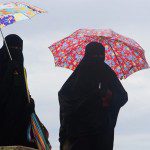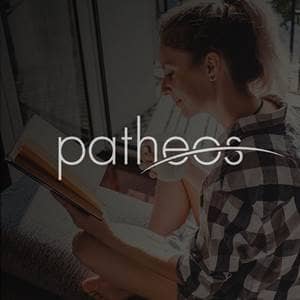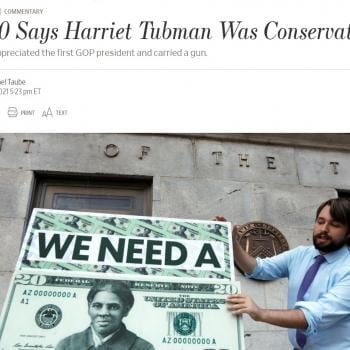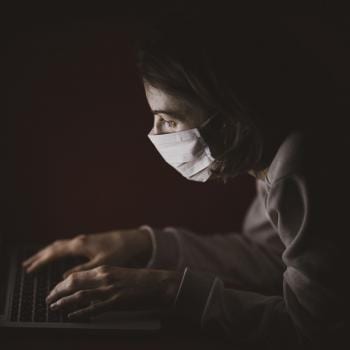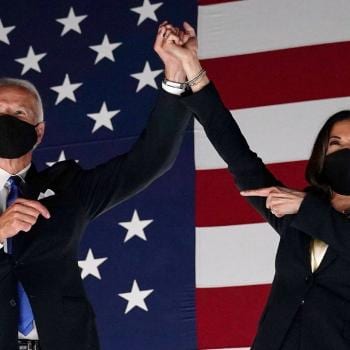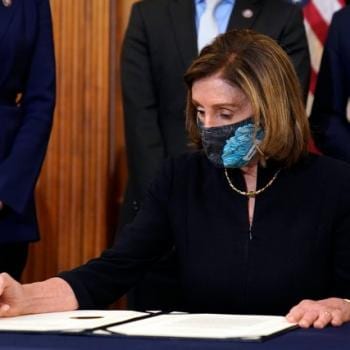In this week’s presidential debate, when asked to speak on race, Donald Trump endorsed New York City’s “stop and frisk” policy. In order to understand how completely out of place his comments felt, let’s start by looking at the question he was responding to:
HOLT: Well, we’re well behind schedule, so I want to move to our next segment. … And let’s start by talking about race. The share of Americans who say race relations are bad in this country is the highest it’s been in decades, much of it amplified by shootings of African-Americans by police, as we’ve seen recently in Charlotte and Tulsa. Race has been a big issue in this campaign, and one of you is going to have to bridge a very wide and bitter gap. So how do you heal the divide? Secretary Clinton, you get two minutes on this.
Clinton responded first, talking about restoring trust between police and communities and about criminal justice reform. She was clearly engaging with the actual question—how we respond to the concerns raised by Black Lives Matter. Trump, though, seemed to be responding to a completely different question. That is of course sometimes how debates like this go—candidates answer the question they wish they were asked, not the question they were actually asked. Let’s see if we can figure out what question Trump thought he was responding to by reading his response:
TRUMP: Well, first of all, Secretary Clinton doesn’t want to use a couple of words, and that’s law and order. And we need law and order. If we don’t have it, we’re not going to have a country.
And when I look at what’s going on in Charlotte, a city I love, a city where I have investments, when I look at what’s going on throughout various parts of our country, whether it’s — I mean, I can just keep naming them all day long — we need law and order in our country.
I just got today the, as you know, the endorsement of the Fraternal Order of Police, we just — just came in. We have endorsements from, I think, almost every police group, very — I mean, a large percentage of them in the United States.
We have a situation where we have our inner cities, African- Americans, Hispanics are living in hell because it’s so dangerous. You walk down the street, you get shot.
In Chicago, they’ve had thousands of shootings, thousands since January 1st. Thousands of shootings. And I’m saying, where is this? Is this a war-torn country? What are we doing? And we have to stop the violence. We have to bring back law and order. In a place like Chicago, where thousands of people have been killed, thousands over the last number of years, in fact, almost 4,000 have been killed since Barack Obama became president, over — almost 4,000 people in Chicago have been killed. We have to bring back law and order.
Now, whether or not in a place like Chicago you do stop and frisk, which worked very well, Mayor Giuliani is here, worked very well in New York. It brought the crime rate way down. But you take the gun away from criminals that shouldn’t be having it.
We have gangs roaming the street. And in many cases, they’re illegally here, illegal immigrants. And they have guns. And they shoot people. And we have to be very strong. And we have to be very vigilant.
We have to be — we have to know what we’re doing. Right now, our police, in many cases, are afraid to do anything. We have to protect our inner cities, because African-American communities are being decimated by crime, decimated.
Remember that the moderator asked about police shootings of unarmed black men, not about crime or crime rates. He asked how Trump would heal the divide. Trump had nothing on that front, apparently. Instead he responded to a different question—how to lower crime rates in inner cities. He was talking about what many conservatives call “black-on-black” crime. To fix this problem, Trump called for more police, more policing, and more invasive police tactics. For a number of reasons, this makes no sense.
The homicide rate has been dropping steadily for three decades. Yes, it went up last year; criminologists aren’t certain why. But outside of select areas, we’re not seeing problems on the level Trump suggests, and even in those select areas, there are often locally specific reasons for what is happening. In Chicago, for instance, existing gangs on the south and west sides have splintered, and smaller gangs with newer alliances are fighting over turf. This is a very serious problem for the people who live in these areas, and the number of people who have been caught in the crossfire is tragic, but it is also specific to Chicago.
Is more police and more policing a good solution for a flashpoint like Chicago? Chicago Mayor Rahm Emmanuel just pledged to add nearly a thousand new police, so he clearly thinks so. But part of the problem in Chicago is a lack of trust between residents of the heavily African American south and west side and the police. Black residents point to the death of Laquan MacDonald, or to a recent police chase that involved officers shooting at a fleeing car thief suspect through residential areas. Many African Americans on the south and west side point to discriminatory treatment by the police and express concern about excessive use of force.
In 2012, an off-duty police officer approached four individuals who had just left a party in a west side neighborhood and, without identifying himself as a police officer, remonstrated them for being so loud. He then shot and killed 22-year-old Rekia Boyd, one of the four. He claimed he mistook her cell phone for a gun, and was acquitted.
In 2014, a police officer shot and killed 17-year-old Laquan McDonald on the southwest side. Laquan had a knife and was walking away from the officer in a non-threatening manner when he was shot by an officer standing ten feet away. The officer fired 16 bullets into his body and continued shooting after Laquan had fallen to the ground. The officer was indicted on six counts of first-degree murder and is going to trial, but the mayor remains under fire for delaying the release of the tapes to protect his reelection campaign.
In 2015, an officer responding to a domestic dispute on the west side shot and killed a family’s 19-year-old son and, unintentionally, a 55-year-old female neighbor. When the teen’s family pressed charges, racist text exchanges between the officer and a friend were unearthed. The officer has counter-sued the city for lack of training and bad information, and the city is fighting back, urging the judge to drop the countersuit. The case is not yet settled.
In 2016, two police officers repeatedly fired at a car driven by an 18-year-old suspected car thief as they chased it through a south side residential neighborhood. Ultimately, an officer shot the suspect in the back when he exited the car and attempted to flee the scene. In filling out a report afterwards, the officer claimed the suspect had fired shots, but the suspect was unarmed and authorities believe the shots were fired by other officers—again, in a residential neighborhood.
Trump’s solution is to throw in more police. I’m not denying that there is a problem—black community leaders on the south and west sides are no happier with the devastation created by inter-gang violence than those in any other community would be. But there’s actually a second problem that Trump seems blind to—the over-willingness of police to use force and the profiling of African Americans (and especially African American youth) as criminal and dangerous. Adding police won’t fix this unless we change the way policing happens; creating a blatantly unconstitutional stop-and-frisk policy would only make this problem worse.
Of course, Trump has made no secret of where his loyalties lie—he constantly boasts about the support he has from police unions and praises the sacrifices of police, a clear statement against the Black Lives Matter movement. What is perhaps baffling is that Trump can be in favor of racial profiling and police use of force while simultaneously claiming to care so deeply about the safety of African American communities from gang violence and homicides. But then, Trump isn’t actually speaking to black communities.
By ignoring police brutality and focusing instead on gang-related inner-city homicides, Trump has found a way to soundly reject the Black Lives Matter movement while still claiming, for the benefit of his white audience, to care about the safety and wellbeing of African Americans and other minorities. What Trump is doing is no different from the deflection that occurs when white Americans respond to Black Lives Matter by bringing up “black-on-black” crime. In fact, it is exactly that deflection. This deflection is dangerous because it allows individuals to ignore the concerns of African American communities while simultaneously patting themselves on the back for caring about black Americans’ safety and wellbeing.
These two problems—police brutality and gang violence—are not isolated problems. They’re inter-related, and not in the way you might thing. The term “black-on-black” crime actually originated within the African American community as a way to talk about racially discriminatory policing.
In December of 1970, Chicago Daily Defender columnist Warner Saunders wrote about getting invited to speak at a seminar on black-on-black crime. To prep for the talk, he caught up with a neighborhood hustler named “Fast Willie” and asked him why he “robbed and beat up black people who are brothers.” Willie’s response was an early indication of what we need to know about the supposed “black-on-black” phenomenon:
We go where the business is and where the man ain’t looking. Can you see me going up to Deerfield, black as I am, trying to stick up? The man would be on me so fast I couldn’t get a chewing gum wrapper. Out here the man is too busy whooping them Panthers and giving tickets to mess with me. Any way, he don’t care if niggers get ripped off. But you can bet he’s watching his ‘thang’ back in his own ‘hood.’
Deerfield is a north Chicago neighborhood that’s historically been predominantly white, and is 96 percent white today. The rest of Willie’s testimony is self-explanatory: He commits crimes against other African Americans because that’s who lives around him—and that’s what police will let him get away with.
Many black communities are both over-policed and under-policed. This summer, when a black rapper attempted to report that he had been robbed at gunpoint to the Chicago Police Department, he saw his complaint belittled by officers. And then there is the opposite issue—African Americans who report domestic disturbances face the very real chance that officers will shoot a loved one rather than deescalating a tense situation. This is especially the case for African Americans with mental health issues. The result is that many African Americans don’t trust in the ability of police to fix problems in their communities.
What Trump and his supporters are missing is that it is not possible to effectively respond to and address crime in African American communities without also (and perhaps first) addressing racial discriminatory policing. But then, many white Americans are probably happy living in a country where the police function as an occupying force in African American communities. And it’s these Americans that were Trump’s primary audience Monday night.

